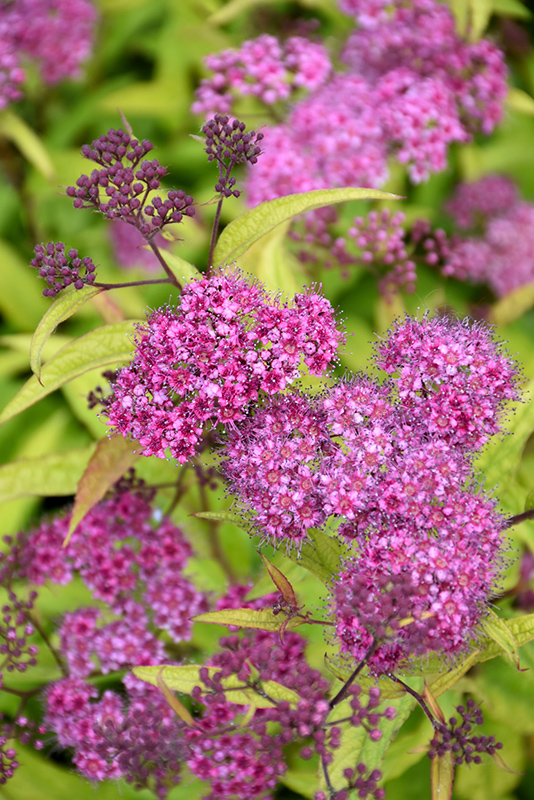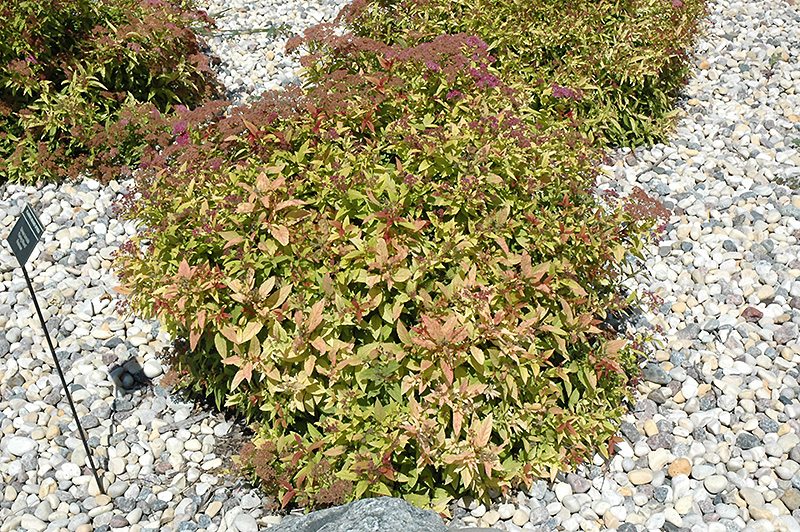The Plant Finder
Have a specific vision in mind for your outdoor space?
Search our database and find the perfect plants to meet your gardening needs.
Flaming Mound Spirea
Spiraea japonica 'Flaming Mound'
Height: 24 inches
Spread: 24 inches
Sunlight:
![]()
Hardiness Zone: 3b
Other Names: Spiraea x bumalda
Description:
A striking garden detail shrub featuring flaming red emergent foliage fading to yellow in summer, turning deep red in fall, and small flat-topped clusters of pink flowers in early summer; a dwarf mounded shrub, very neat and tidy
Ornamental Features
Flaming Mound Spirea is smothered in stunning clusters of rose flowers at the ends of the branches from late spring to early summer. It has attractive red deciduous foliage which emerges antique red in spring. The small serrated pointy leaves are highly ornamental and turn an outstanding coppery-bronze in the fall.
Landscape Attributes
Flaming Mound Spirea is a multi-stemmed deciduous shrub with a more or less rounded form. Its relatively fine texture sets it apart from other landscape plants with less refined foliage.
This shrub will require occasional maintenance and upkeep, and is best pruned in late winter once the threat of extreme cold has passed. It is a good choice for attracting butterflies to your yard, but is not particularly attractive to deer who tend to leave it alone in favor of tastier treats. It has no significant negative characteristics.
Flaming Mound Spirea is recommended for the following landscape applications;
- Mass Planting
- Rock/Alpine Gardens
- General Garden Use
Planting & Growing
Flaming Mound Spirea will grow to be about 24 inches tall at maturity, with a spread of 24 inches. It tends to fill out right to the ground and therefore doesn't necessarily require facer plants in front. It grows at a fast rate, and under ideal conditions can be expected to live for approximately 20 years.
This shrub should only be grown in full sunlight. It prefers to grow in average to moist conditions, and shouldn't be allowed to dry out. It is not particular as to soil type or pH. It is highly tolerant of urban pollution and will even thrive in inner city environments. This is a selected variety of a species not originally from North America.


